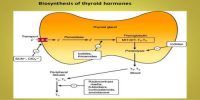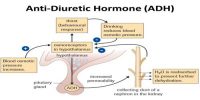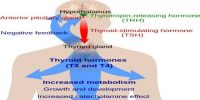Testosterone is the key sex hormone found in men. It regulates male fertility, muscle mass, red blood cell production and overall physical features. It is most often linked with sex drive and plays an essential function in sperm production. Women have testosterone too but in much lesser amounts than in men.
Source:
- Manly Leydig cells of testes,
- Also formed from androstenedione secreted.
Testosterone is involved in the growth of male sex organs before birth, and the growth of secondary sex characteristics at puberty, such as voice deepening, increased penis and testes size, and growth of facial and body hair.
Chemical Nature: C19 steroid with an OH– group in the 17th position.
Secretion rate: 4-9 mg/d (13.9 – 31.33 μ mol /d in normal adult males.
Transport: 98% is bound to protein by
(a) 65% to a β-globulin called “Gonadal steroid-binding globulin.
(b) Rest 33% to albumin.
Plasma Testosterone level: 330 – 1000 ng/dl (10.4 – 34.7 nmol/L) in male.
Mechanism of action:
(A) Testosterone binds to an intracellular receptor. The receptor-steroid complex then binds to DNA in the nucleus and induces DNA-RNA transcription of various genes.
(B) Within 30 minutes RNA polymer has become activated and begins to increase RNA concentration followed by a progressive increase in protein formation.
(C) In addition, testosterone is converted to dihydrotestosterone (DHS) by 5α-reductase in some target cells and DHT binds to the same intracellular receptor as testosterone.
Fast facts on testosterone
- It regulates a number of processes in the male body.
- Levels of testosterone tend to drop as men age.
- Prohormone supplements do not have any effect on testosterone levels.
- It supplements are prescribed only for particular conditions, and not to counteract the natural, age-related drop in testosterone levels.
- Testosterone replacement therapy is also available. However, this can carry side effects and risks.
















